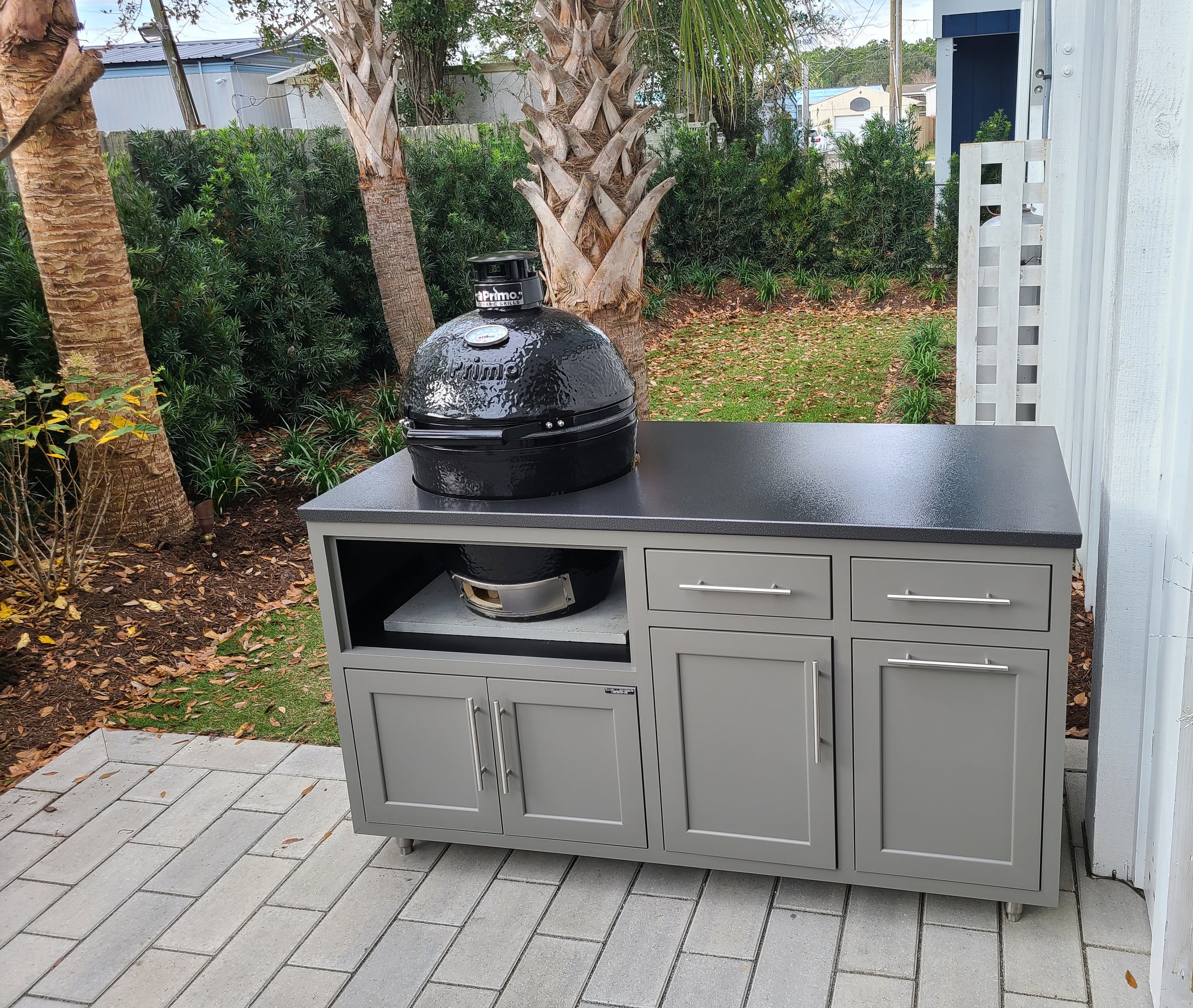
Our Top 10 Outdoor Kitchen Design Tips
Josh RowellOur Top 10 Outdoor Kitchen Design Tips
Creating an outdoor kitchen adds a whole new dimension to your home. It’s not just about grilling burgers; it’s about creating a space where you can cook, entertain, and enjoy the great outdoors. Whether you have a sprawling backyard or a cozy patio, here are 10 design tips to help you create the perfect outdoor kitchen:
1. Location
Choose a spot that’s convenient for both cooking and entertaining. Consider proximity to the indoor kitchen, access to utilities (water, gas, electricity), and prevailing wind patterns. Long walks and multiple doors between your indoor kitchen and your new outdoor kitchen can deter you form using your new space as much.
2. Layout and Flow
Plan your layout carefully. The classic work triangle (sink, cooktop, and refrigerator) isn't always feasible with outdoor kitchens but the theory applies! Keep prep areas close to the grill, and create a seamless flow between cooking, serving, prep and dining zones.
Pro Tip: Casual Furniture World is pleased to provide complimentary outdoor kitchen design using our simple 3 step design process!
3. Weather-Resistant Materials
Invest in durable materials that can withstand the elements. Look for high-quality stainless steel appliances and weather-resistant cabinets made of PVC or aluminum. Granite and Dekton countertops are both functional and beautiful. While also beautiful, other natural stone tops such as bluestone are more susceptible to stains from food spills and splatters.
Pro Tip! Look for storage options that have gaskets or drip ledges to keep stored items clean and dry. Your builder can also add similar features as part of the design/build process.
4. Venting
Make sure that your contractor is familiar with the venting requirements of an outdoor kitchen. When placed under a combustible surface nearly all appliances will require a vent-hood above the cooking surface. This can be a bit tricky if you are going to have multiple cooking surfaces but there are many unique options. such as hidden or recessed vents.
Your outdoor kitchen cabinet(s) will also require venting per the owners manual of your cooking appliances. It is important have made your appliance selections before finalizing your outdoor kitchen plans to ensure that your project passes local building codes.
Pro Tip: The venting requirements can change depending on whether you have Natural Gas or Propane Gas - make sure to check your owners manuals.
5. Appliances and Accessories
Make a wish list of all of the appliances that you want and all of the new and exciting things you want to cook and techniques you want to try! A trained professional will help you with layouts and make suggestions to help you achieve the ultimate cooking experience. There are so many unique items to consider today such as: pizza ovens, griddles (teppanyaki) and ceramic smokers. If you can't fit them all, there are many unique products that offer 2 or even 3-in-1 versatility, saving space and money if needed. Buy quality appliances that can be repaired and serviced. This will ensure that you enjoy you time using your outdoor kitchen and that your appliances last for the life of your kitchen.
6. Lighting Magic
Outdoor kitchens come alive at night with proper lighting. Install task lighting over the grill and prep areas, toe-kick lighting along your cabinetry and decorative lights to create a cozy atmosphere.
7. Countertop Space
Countertop space is most overlooked item we see! You’ll need ample countertop space for food prep, plating, and serving. The more counterspace the better and we recommend countertop space directly to the right or left of your primary grilling surface. A good rule of thumb is to have counterspace that is at least the width of your grill.
Pro Tip - Right handed grill masters often prefer counter space to be to the right of the grill (and yes, left handers to the left of the grill)
8. Weather / Climate
Take careful consideration of your area and climate especially if you are installing plumbing. Refrigerators may need to be in insulated cabinetry to ensure proper performance and water and drain lines may need to have heat tape and/or insulation to ensure your round use and prevent bursting. In more extreme areas, you may need to ensure you have easy access to completely turn off the water and to be able to drain all lines (winterizing) for the winter.
9. Heating
Consider adding additional outdoor heating elements so that you can enjoy your new outdoor kitchen year round. With open-air outdoor kitchens, free-standing infrared or radiant heaters may do the trick. For covered areas there are a number of gas and electric built in options to have you cooking outdoors year round.
10. Seating and Dining
Consider your outdoor furniture early in the process. Quality outdoor furnishings can be expensive and you will want to make sure to include this in your overall budget. This will ensure that you have ample seating that matches the style and quality for your new outdoor kitchen for your family and friends to enjoy!
Remember, an outdoor kitchen isn’t just about functionality; it’s about creating a space where memories are made. So fire up the grill, pour a glass of your favorite and enjoy the experience!
Get Inspired: Check out our outdoor kitchen photo gallery HERE
If you are ready to get started, click HERE to schedule your complimentary outdoor kitchen design appointment. Each one of our LOCATIONS feature a partners page where you can find local, trusted contactors to help bring your vision to life!
